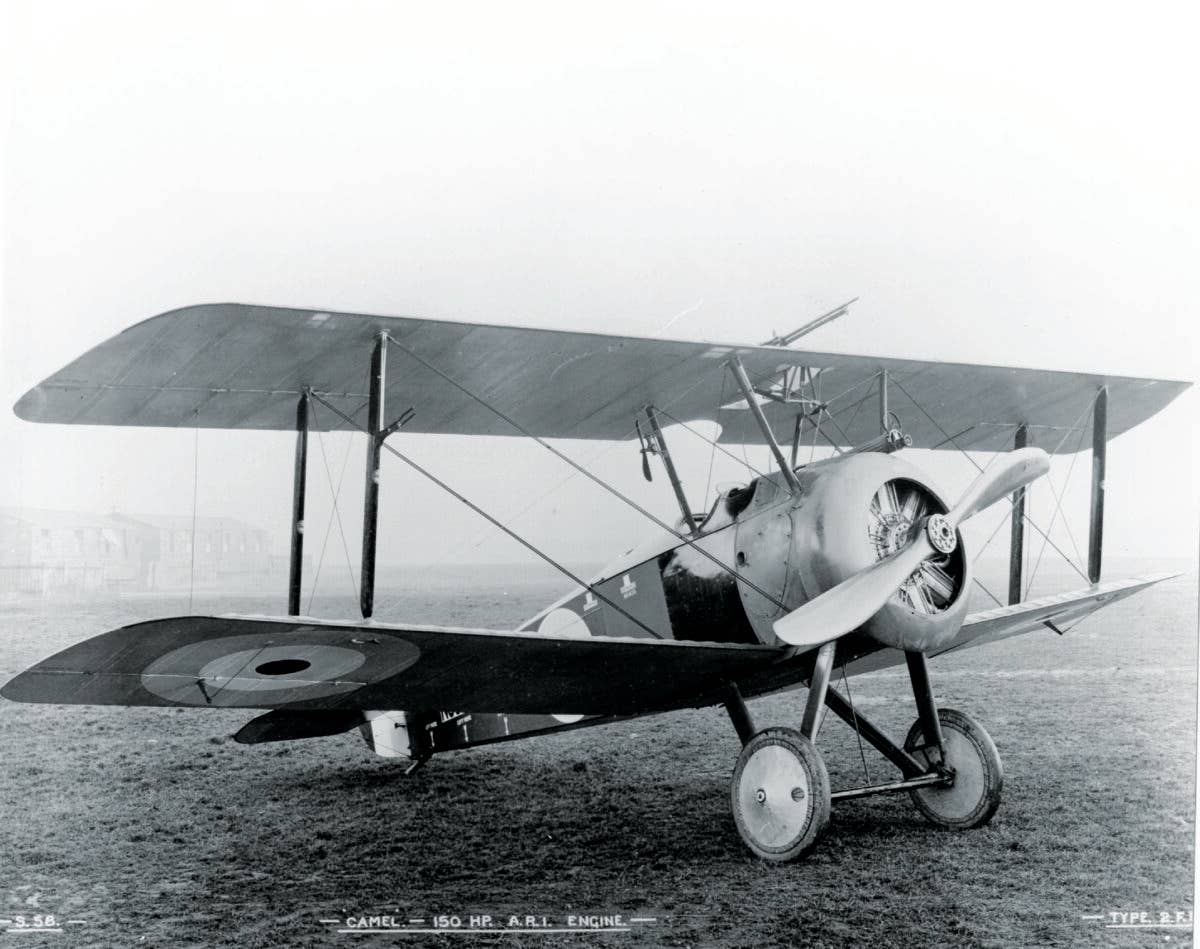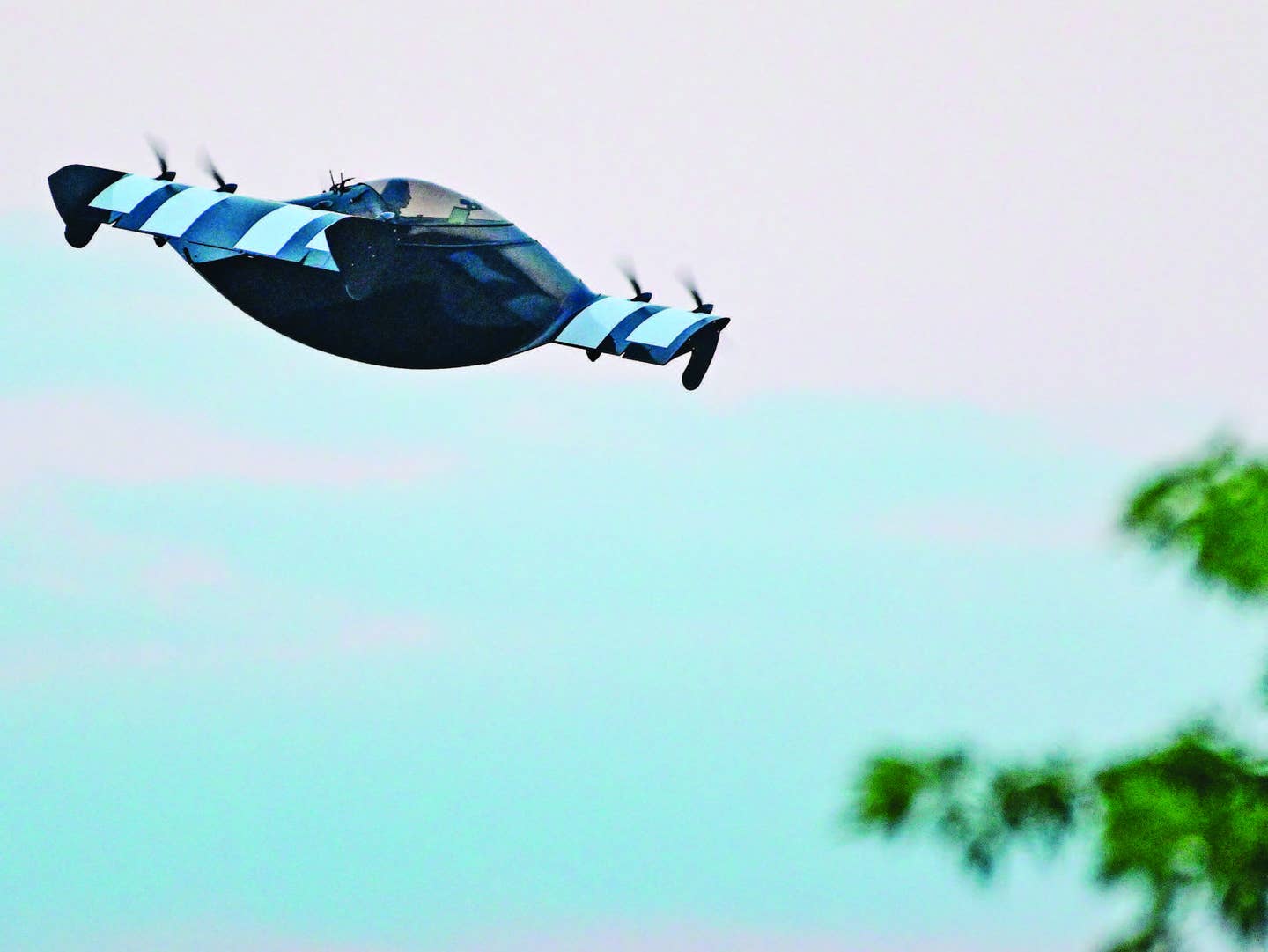When the Nose of a Camel Starts to Wander
Some pilots claimed that the Camel’s proclivity for uncoordinated flight became an advantage in aerial combat.

Sopwith Camel [Credit: Library of Congress]
My friend Javier Arango, for whom flying a 1917 Sopwith Camel was as routine as flying a Skyhawk is for the average CFI, wrote that “...control forces in pitch and yaw are minimal throughout its wide range of speeds. They are, in fact, so light that the airplane has no elevator trim. Our modern airplanes require constant use of a trim tab to adjust control forces with a deviation of even 20 knots. The Camel can extend its speed through an envelope of 100 knots or more without need for trim."
No trim to worry about, light control forces—sounds like a nice-flying airplane. But there was a catch. Because the center of gravity (CG) was located, by design, unusually far aft, the Camel lacked longitudinal stability. The nose was always starting to wander up or down, and so the Camel had to be hand-flown all the time—foot-flown too, since its tiny vertical fin and aerodynamically balanced rudder provided only the bare minimum of directional stability. Initially unnerving, this randomness became second nature to Camel pilots, who, after a harrowing first few hours, were no more consciously aware of supplying the missing stability than a bicyclist is. Some pilots claimed that the Camel’s proclivity for uncoordinated flight became an advantage in aerial combat: Enemy pilots had a hard time getting a bead on a Camel because they could not figure out where it was going.
Imagine an airplane with just a stabilizer, but no elevator. We know intuitively, having hand-launched many a balsa glider, that it wants to settle down and fly at a single speed. Why? Because that is the speed at which all the moments are balanced. Longitudinal stability requires that there be only one such speed.
When we talk about longitudinal stability and control, “moment” means “pitching moment”—a force tending to raise or lower the nose. Nose-up pitching moments are called positive, nose-down moments are negative. The main moments come from three sources: the position of the CG relative to the wing, the natural tendency of most cambered wings—more powerful when flaps are deflected—to pitch nose-down, and the up or down force provided by the horizontal tail.
The lift of the wing can be thought of as acting at the aerodynamic center or AC, which is about a quarter of the chord length back from the leading edge. If the CG is not at exactly that point—and it never is—an upward or downward force on the horizontal tail is needed for balance. Suppose you have a 3,000-pound airplane, cruising at 160 kias. If the CG is 6 inches ahead of the AC, you have an unbalanced nose-down moment of 18,000 pound-inches. If the horizontal stabilizer is 200 inches behind the wing, a 90-pound downforce will be needed. The pitching moment of the wing, which depends on the airfoil, might contribute as much as another 25,000 pound-inches, bringing the tail downforce needed for equilibrium to 215 pounds.
A more aft CG location reduces the tail downforce requirement. If the CG is 6 inches behind the AC, and if, in addition, the wing uses one of those airfoils, like the NACA 23000 series beloved of Beech and Cessna, that are designed to have almost no pitching moment, you might end up with an 18,000 pound-inch nose-up moment and a 90-pound upward force on the tail.
While the moment attributable to CG position is constant, the pitching moment contribution of the wing is purely aerodynamic and therefore varies with speed. We can ignore the portion of the tail force required to balance it, however, since speed affects both in exactly the same way. But in order for the horizontal tail to produce the required constant up- or down-force to balance the airplane’s weight at a range of speeds, some method of adjusting its camber is needed. That method is the elevator.
Trim is the system that makes it possible to maintain an elevator setting without pilot effort, and therefore, to select the speed at which the airplane flies hands-off. Various tail geometries do it in different ways, but there are three principal options. The incidence of the stabilizer (the angle at which it attaches to the empennage) can be changed (most airliners use this system); the neutral or “floating” position of the elevator can be adjusted by a small tab on its trailing edge; or, in the case of a stabilator or all-flying tail, the pilot can adjust the neutral position of the anti-servo tab, which in turn controls the incidence of the stabilator.
So, what is the connection between trim and longitudinal stability? Why does the Camel’s aft CG mean that it also lacks a provision for trim?
Speed stability requires that whatever aerodynamic changes occur when the airplane deviates from equilibrium must tend to return it there. In other words, if the airplane encounters a gust from below, or you pull the nose up, it should want to nose down. In technical terms, the airplane’s pitching moment must become more negative if the angle of attack increases.
A horizontal stabilizer is typically set on the empennage at a slightly more negative angle of attack than the wing. The angular difference is called its decalage, and it points to a fundamental requirement for longitudinal stability. With any arrangement of two flying surfaces in tandem, the front surface needs to “work harder” (that is, generate a greater proportion of its potential maximum lift in a positive direction) than the rear surface. Notice that this rule says nothing about the relative sizes of the front and rear surfaces. For a canard airplane (a canard being a small wing-like structure attached to the nose of the airplane), the same principle applies, but the names are different; “stabilizer” becomes “wing” and “wing” becomes “canard.”
An easy way to think about it is to imagine the amount of lifting force available from the wing or stabilizer on a scale of zero to 10, and the range of angles of attack between zero-G and the stall as 10 units as well. Each change of one unit of angle of attack causes a change of one unit of lift.
So let’s say you’re cruising along, your wing is generating three units of lift, and, because you have an aft CG, your stabilizer is generating one unit upward. You raise the nose one unit of angle of attack. The wing is now generating four units of lift and the stabilizer is generating two. The thing to notice is that the wing lift has increased by 33 percent while the stabilizer lift has increased by 100 percent. That is why the stabilizer is such a powerful corrective; it is proportionately more affected than the wing by a given change in angle of attack because it is working less hard to begin with.
The farther aft the CG, the greater the nose-up moment it creates, and the more the aft surface has to push upward to balance it. If the stabilizer is supplying two units of lift rather than one, then the one-unit change in angle of attack will increase its lift by only 50 percent rather than 100 percent. Obviously, as the CG moves farther and farther aft, you eventually get to a point where the stabilizer is working just as hard as the wing; a given change in angle of attack affects them similarly, and so no corrective moment is produced. That is the “neutral point” where longitudinal stability disappears. No trim is required, because the moments are equal at all speeds.
And that’s why your airplane has an aft CG limit, which is several inches ahead of the neutral point and holds up a sign saying, “Go no farther. Here there be dragons.”
And that’s also why it needs trim, and why a Camel, whose CG is at the neutral point, doesn’t.

Sign-up for newsletters & special offers!
Get the latest FLYING stories & special offers delivered directly to your inbox






